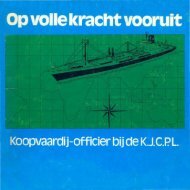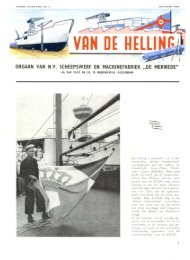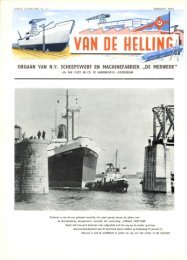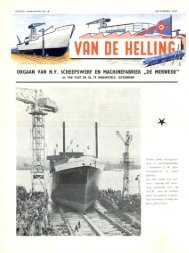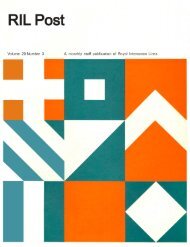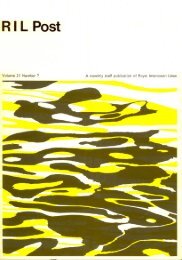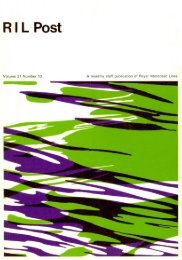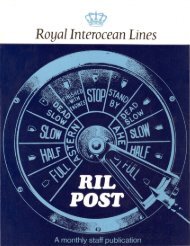You also want an ePaper? Increase the reach of your titles
YUMPU automatically turns print PDFs into web optimized ePapers that Google loves.
The following is an impression from one of those who took part:<br />
" ... We were surprised to learn that we<br />
would take turns as master, navigator<br />
and helmsman. A far-reaching democratic<br />
proposal- possibly through the<br />
influence of the students of this city?<br />
The first impression was very pleasant,<br />
coffee was excellent and abundant, the<br />
catering staff female and a treat to look<br />
at . After a short introduction, we were<br />
led via the acclimatisation-room (in<br />
order to get used to the reduced light<br />
intensity), to our working area, the<br />
bridge. This was perfectly designed<br />
and equipped with all the navigational<br />
aids known to us. Everyone felt at<br />
home straight away, the more so because<br />
here too the chart pencil was<br />
missing!<br />
When (in connection with extensions<br />
to the building) someone started to<br />
work with an air-chisel, we so much<br />
imagined ourselves to be at sea that<br />
one of our number opened the wheelhouse<br />
door and yelled to the bosun to<br />
enquire if it w as necessary to chip the<br />
deck today.<br />
It was nevertheless a busy voyage, in<br />
which sometimes two ports per hour<br />
were called at. heavily testing the endurance<br />
of the crew. The weather was<br />
completely disorganized too: though it<br />
was fine outside, we for the most part<br />
encountered wind Force 8-9 and fog.<br />
The ports we called at were not up to<br />
date. were partly silted up with narrow<br />
entrances, which again were obstructed<br />
by w recks. Pilots did board the vessel<br />
but they never gave us any advice.<br />
The problems to be solved va ried from<br />
normal to difficult- if not unsolvable.<br />
One exercise (entering a port} topped<br />
the list. After a few mishaps, one of<br />
the trainees finally succeeded in entering<br />
port safely. Instructions were as<br />
follows:<br />
Initial speed 10 knots. wind force<br />
9 abreast from starboard, current 3<br />
knots from starboard and 4 points<br />
abaft the beam. The pilot had to be<br />
picked up 1500 metres closer in, speed<br />
3 knots again. 1500 metres closer to<br />
the port, a wreck obstructing the<br />
harbour entrance had to be passed.<br />
The entrance itself was then 750<br />
metres away and only 350 metres<br />
wide because of silting.<br />
During the course. it so happened that<br />
we embarked pilots without making<br />
lee, going at a speed of 9 knots, sailed<br />
over wrecks, and stranded the vessel<br />
without being summoned to a Board<br />
of Enquiry!<br />
When we signed off. we had learned<br />
what we could do with the vessel. but<br />
we also had found out what not to do.<br />
We parted in good spirits, having obtained<br />
much experience which will certainly<br />
be of va lue when in the early<br />
Spring of 1971 the t.s. Simulator will<br />
come to life in ABEL TASMAN."<br />
The view ahead from the wheelhouse gives an accurately simulated coastline of about 8 miles wide.<br />
M aximum distance from the coastline is about 10 miles, and as the 'ship' approaches a port, a<br />
distance of about 3 miles is simulated from ship to breakwater-heads.<br />
47



